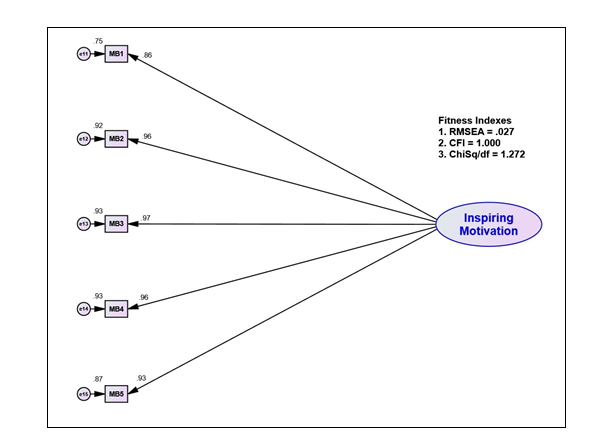
Abstract: There are two
ways to conduct Confirmatory Factor Analysis (CFA) using individual
confirmatory factor analysis or group confirmatory factor analysis based on the
measurement model. The number of items depends on the construct used in the
study and the measurement model analysis is conducted separately if the number
of items in the construct is more than four. Whereas, pooled CFA runs all
measurement models at the same time. This Unidimensionality requirement can be
met through the item deletion procedure that has a low factor loading value to
reach the set level of fitness indexes. Items with a factor loading value of
less than 0.6 are considered unimportant to the measurement of the construct
and can be discarded Chik, Abdullah, Ismail and Mohd Noor (2024). A total of 384
study samples were involved in this research. Data were analyzed using the
IBM-SPSS-AMOS (Structural Equation Modeling-SEM) program version 21.0.
Adjustment tests were conducted to ensure that the tested indicators truly
represent the construct being measured and Confirmatory Factor Analysis was
conducted in this study as a prerequisite that must be met. The findings of the
study show that all the correlations between the constructs Principal Transformational Leadership (based on Cultivating Ideal
Influence, Building Intellectual Stimulation, Inspiring Motivation, Individual
Consideration), Teacher Commitment and Classroom
Assessment have a
value less than 0.85 (<0.85) teachers of Terengganu National Schools. The results of the combined confirmatory factor analysis of
all measurement models (Pooled CFA), prove that all constructs do not have a
strong relationship with each other to avoid the existence of multicollinearity
problems.
Keywords:
Principal
Transformational Leadership, Inspiring Motivation, Classroom Assessment, Confirmatory Factor Analysis (CFA), Pooled CFA
